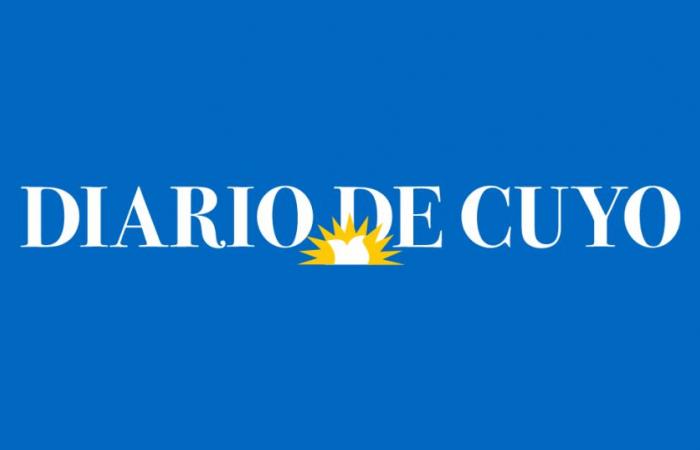Every June 13, the Plaza de Concepción, not coincidentally called Juan Jufré, is again designated as the site where the Spanish founder laid the foundation stone of the city of San Juan de la Frontera. But this, according to San Juan historian Guillermo Genini, is totally false. The problem is that the only certainty there is is that it was not founded there, but there is no concrete evidence that indicates with certainty where the city was born. The academic, for now, leans towards two hypotheses: that it was in a stream derived from the Zonda estuaries, in a channel that no longer exists today, or that it was much further south, in an area of Trinidad. .

The Spanish had a practice of establishing their cities related to the resources they could obtain near that space. In that sense, key elements can be considered: the permanent provision of water, essential for the maintenance of the population, animals and crops; and the location in relation to pastures that were to provide food for the animals and ensure direct communication with the cities or their administrative centers.
As Genini explains, these three elements are met by the current site of the city of San Juan. “It was located on the side of a stream called Estero de Zonda, which indicates its Chilean origin, since in the neighboring country the streams are called esteros, a historical imprint that remains in San Juan,” says Genini. For example, Santiago de Estero demonstrates that Chilean influence reached the center of Argentine territory.
The Zonda Estuary, according to the historian, had a development from the exit of the Zonda mountains towards the east. It is estimated that, in the territories that today make up the central area of the Capital, its course descended almost in a straight line between the current Libertador and Ignacio de la Roza avenues. Today it does not reach the city because it is cut off on Chacabuco Street, at the turn of the so-called Curva de los Follos in Marquesado, Rivadavia. This cut, says Genini, occurred in the independent era, between 1818 and 1819, when San Martín needed to expand the irrigated lands of San Juan. It was cut off with labor paid by the province of Cuyo, under the charge of Toribio Luzuriaga, and with that water they irrigated areas of Rawson and Pocito.
For this reason, the historian warns, the city was more closely linked to the Estero de Zonda stream (now disappeared) than to the San Juan River. “This stream had advantages over the river, since it was a stable, small and not dangerous source of water. In addition, the Spanish did not found cities next to the river: they did not do so in La Serena, in Santiago de Chile or in Mendoza,” Genini adds.
> THE IMPORTANCE OF THE SWAMP
According to this reasoning, and as a second hypothesis, the city of San Juan could also have been founded near a swamp that no longer exists today. It was a large body of water that varied its flow in winter and summer. The swamps, according to historical documents, existed until the 19th century. Its edge, adds Genini, would be in the current area of the UVT, Villa Carolina, Villa del Pino and Médano de Oro. The swamp provided the city with pasture and water to sustain the animals. On the other hand, the city would have had to have been founded on the right bank of the San Juan River, which ensured direct communication with the Spanish cities of that time: Santiago de Chile, La Serena and Mendoza.
It must be taken into account, as the historian points out, that the official route to Chile was not through Mendoza but through Zonda. The road originally left from the city of San Juan, in a straight line to the Quebrada de Zonda and there it continued through the Maradona ranch to the foothills, the Tontal and the Leoncito until joining the Camino de los Patos to the Aconcagua Valley or along Uspallata to Santiago. That road, says Genini, coincides with the current Ignacio de la Roza Avenue.
As the historian explains, the royal roads were straight. When calculating the difference between De la Roza and Libertador avenues, which were opened at the beginning of the 19th century by joining pre-existing paths, you can see that the latter has curves; On the other hand, Central Avenue is straight. Furthermore, the existence of the first post, located in the so-called Esquina Colorada, establishes that it had a transit function. On the other hand, the constructions on Libertador Avenue are linked to religious and agrarian occupation.


> Conflicting sources
Genini highlights that some sources maintain that the city was rebuilt and others that it was moved. This process is currently being reviewed so it is not possible to know with certainty where it was founded. For the historian, there are two possibilities: that the city is the same as it is now, having been flooded and rebuilt on the same site, and the other is that the city was moved but it is not known exactly from where. Some sources indicate that it was about 25 blocks, but they all agree that the direction would be from the northeast. That is to say, adds Genini, that there would be no references to the current Plaza de Concepción. For her part, historian Leonor Paredes de Scarso maintains that this square was built thanks to a donation from two sisters at the beginning of the 19th century, so the current square would not be the central nucleus of the population. “We cannot indicate an exact place where the city would have been founded; we would also have to analyze the geological history of the central valley, which is difficult because the geology was altered by the expansion of the city,” says Genini.






